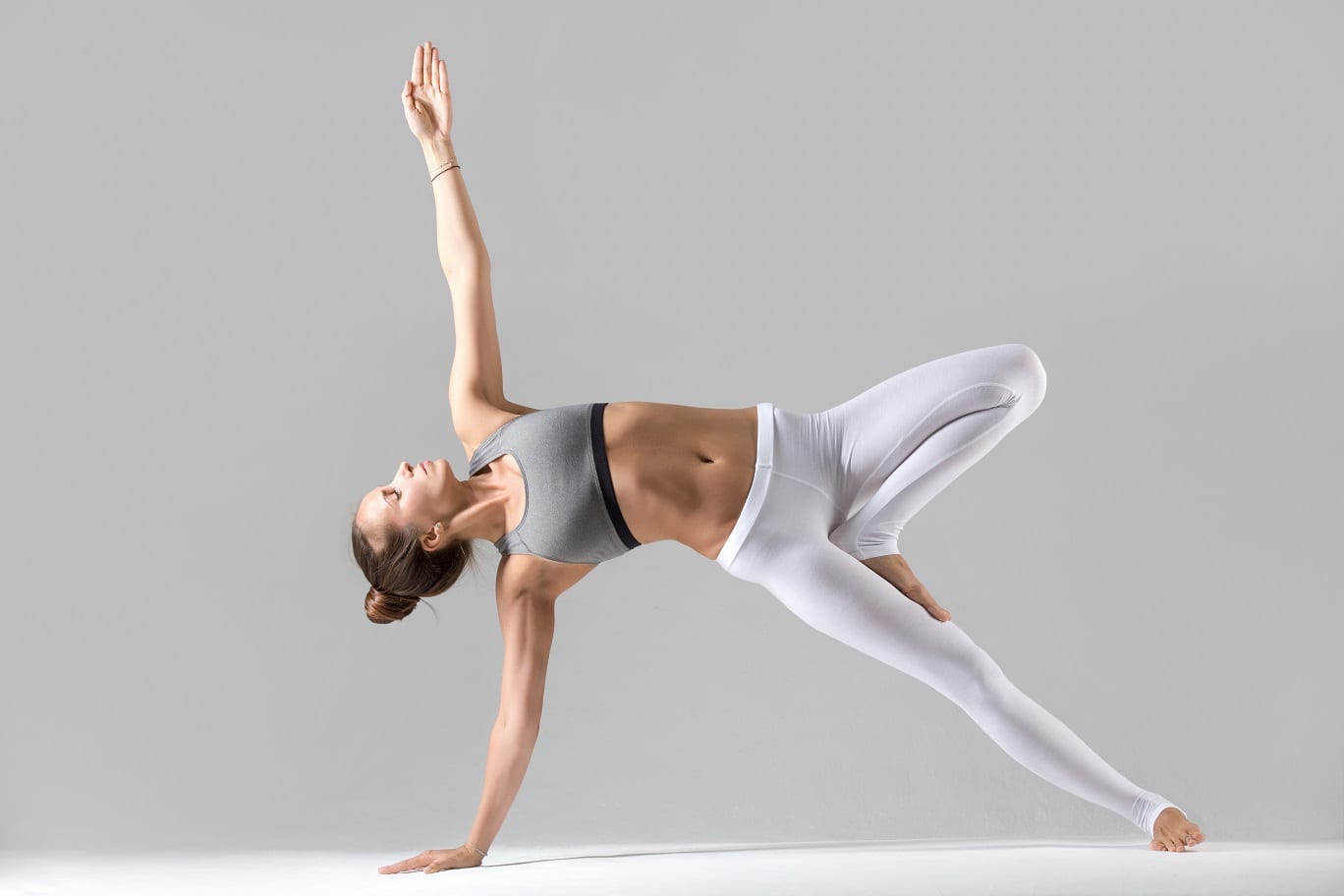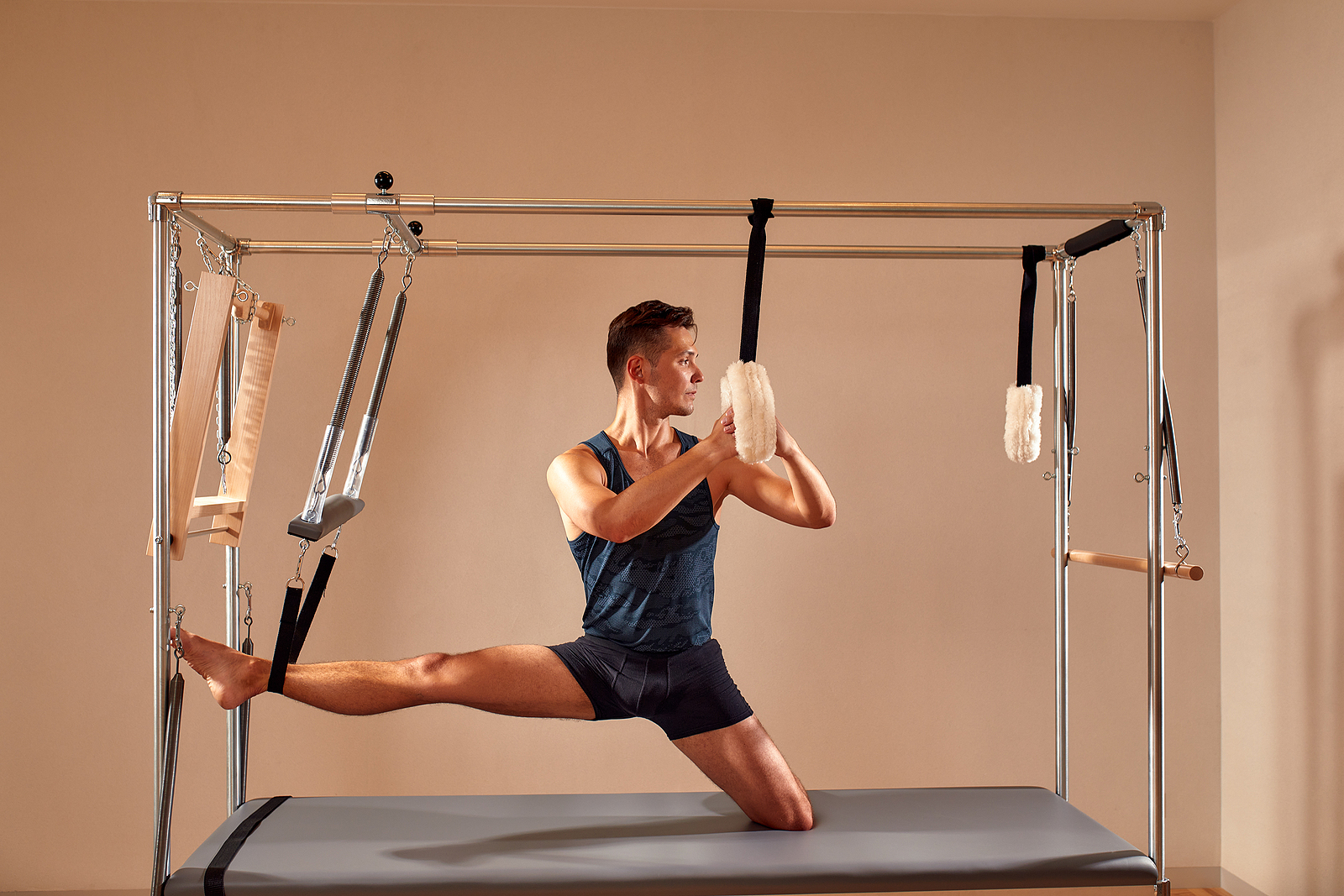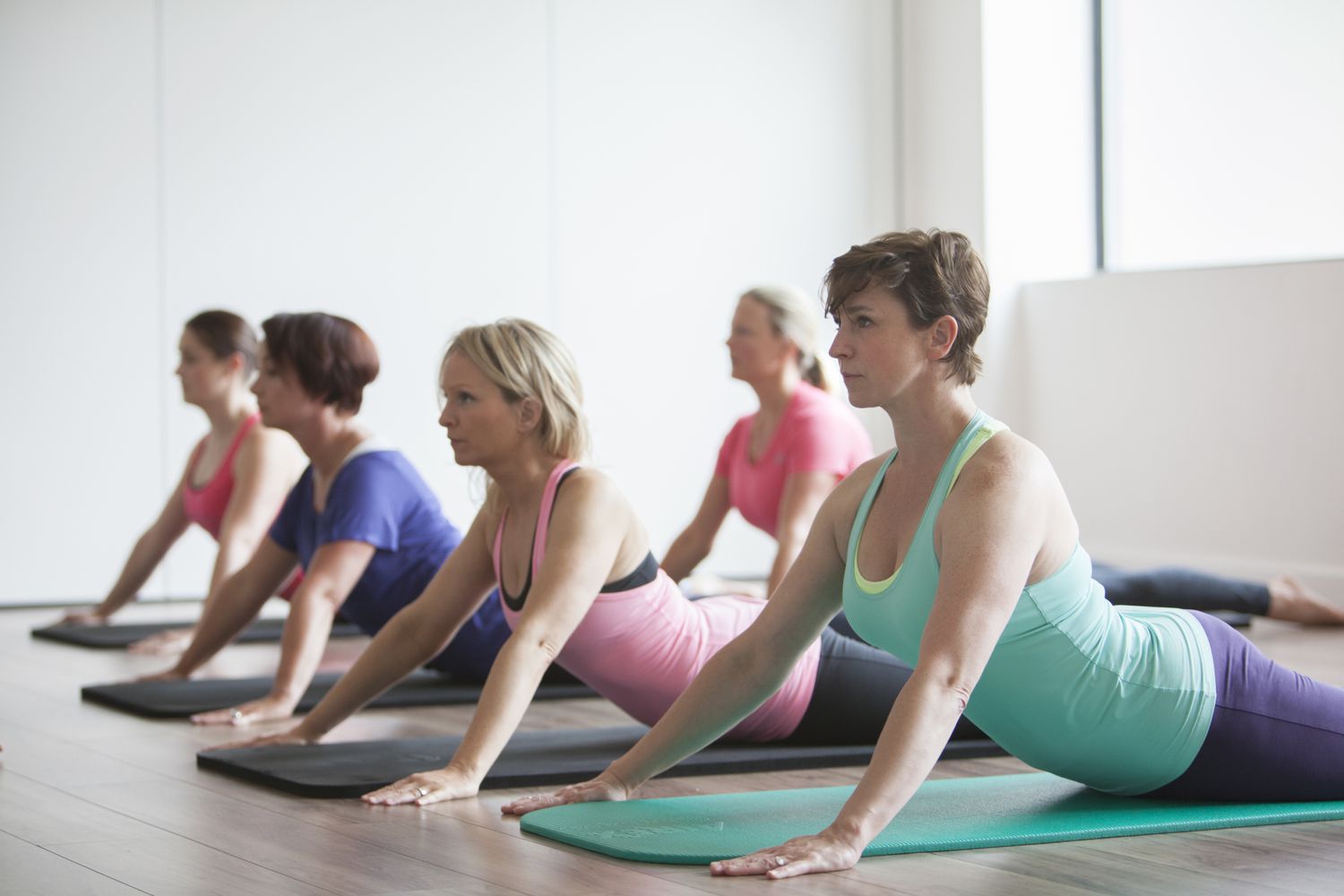The Top Pilates Benefits For Athletes You Should Know
Discover the transformative power of Pilates for athletes. Explore how Pilates enhances flexibility, builds strength, and fosters a mindful mind-body connection. Unlock the key to optimized athletic performance and injury prevention with Pilates benefits for athletes.
Author:Karan EmeryReviewer:Katharine TateFeb 26, 2024859 Shares20.9K Views

If you've ever thought, "Does LeBron James do Pilates?" You might be shocked to learn that Pilates is a big part of his workout routine. Pilates benefits for athletesby keeping them from getting hurt and making them more stable. Find out how Pilates can help you and why you should do mat or reformer Pilates as part of your workout.
Both professional and amateur players are always looking for new ways to improve their skills and stay in top shape. Pilates is becoming more popular among sports. Professionals like Ronaldo and Andy Murray do routines as part of their training.
Pilates Provides Flexibility
Pilates proves to be particularly beneficial in addressing the common issue of tight hamstrings, often associated with sports that demand explosive force and speed, such as football and sprinting. Athletes engaged in these sports often experience decreased agility and quickness due to stiff muscles.
Unlike high-paced, power-driven exercises, Pilates encourages a mindful and deliberate pace. By focusing on smooth transitions and incorporating brief pauses between movements, Pilates allows individuals to push their physical limits without subjecting their bodies to unnecessary strain.
Pilates effectively targets every muscle group in the body, offering a comprehensive workout that promotes natural mobility, relaxed muscles, and seamless transitions between movements. Pilates becomes a dynamic tool for athletes, enhancing their overall flexibility and contributing to a more fluid and efficient performance.
Moreover, Pilates extends its benefits beyond lower body flexibility, addressing the specific needs of athletes requiring forceful spine rotation, such as golfers. The emphasis on controlled movements and core engagement in Pilates can significantly contribute to improving upper body flexibility.
Rebalance The Body
In many sports, the repetitive use of specific muscle groups and movement patterns can lead to imbalances within the body. For instance, activities like running predominantly engage muscles in a singular direction, promoting strength in that particular plane while neglecting other essential movements like twisting, bending, and side-stepping.
Enter Pilates - a tailored solution designed to address these concerns. Unlike many sports that focus on linear movements, Pilates incorporates exercises that move the body in diverse planes and orientations. This multidimensional approach helps activate and strengthen muscles that may be underutilized in more conventional training regimens. By engaging the body in various planes of motion, Pilates works to rectify the muscle imbalances created by the repetitive nature of certain sports.
A key feature of Pilates is its inclusion of unilateral movements, exercises that isolate and work each side of the body independently. This deliberate approach ensures that muscles are strengthened evenly, promoting symmetry and balance.
Efficiency Of Movement
Consider triathletes, individuals undertaking a triad of consecutive events where efficiency of motion is paramount. Pilates, with its focus on optimal biomechanics, proves instrumental in preventing overuse of specific muscle groups, mitigating the risk of potential injuries. Its unique emphasis on functional strength and flexibility not only enhances performance but also aids in energy conservation - a critical advantage for athletes engaged in endurance events.
Furthermore, Pilates plays a pivotal role in cultivating a robust core musculature, a facet crucial for enhancing cycling efficiency. The development of a strong core is indispensable in maintaining stability on the saddle, preventing the undesirable side-to-side rocking motion that compromises performance. Without a solid core foundation, cyclists may find themselves constantly compensating for these movements, leading to a loss of power in their legs.
Additionally, the lack of stability can contribute to issues like back pain and saddle soreness. Pilates, with its targeted exercises, addresses these concerns by strengthening the pelvis, lower back, and abdominals, thereby promoting stability and minimizing the risk of discomfort or performance setbacks for cyclists.
Builds Endurance
Pilates places a distinct emphasis on cultivating effective breathing techniques during movement, offering athletes a valuable tool to sustain and enhance their endurance.
In the realm of sports, injuries are an inherent part of the game. While athletes frequently contend with minor bruises, scrapes, and scratches, Pilates goes beyond conventional training approaches. It serves as a proactive method, teaching athletes how to cultivate strength and push their boundaries without compromising their well-being.
The adaptability inherent in Pilates allows athletes to tailor their movements and pace to align with their current abilities, fostering an environment that encourages gradual progress while respecting individual capacities at any given time.
Injury Prevention
research indicates that approximately62.49% of professional athletescontend with injuries each season, highlighting the urgency for effective preventive measures. Pilates, with its meticulous focus on often overlooked stabilizing muscles, emerges as a game-changer in injury prevention compared to traditional workout routines.
By honing in on these smaller yet crucial stabilizing muscles, Pilates addresses muscle imbalances inherent in many athletes, correcting postural issues and asymmetries. This targeted approach significantly contributes to reducing the risk of overuse injuries, a common consequence of repetitive athletic activities.
Moreover, the controlled and precise movements inherent in Pilates go beyond the physical, fostering heightened body awareness among athletes. This increased awareness enables individuals to identify and rectify potential issues before they escalate into serious problems.
To further illustrate, specific Pilates exercises are strategically designed to target stabilizing muscles, thereby fortifying key areas prone to injury. Examples include the Clamshell, which focuses on hip stabilizers crucial for preventing knee and hip injuries, and the Bird Dog, enhancing stability and coordination by working on core and back muscles. Additionally, the Supine Toe Taps exercise strengthens the lower abdominals, contributing to a more stable and resilient lower back.
Recovery And Rehabilitation
What sets Pilates apart is its deliberate and controlled tempo, expansive range of motion, gentle myofascial system stimulation, and emphasis on symmetrical movement patterns.
The measured pace of Pilates allows for a more mindful and deliberate rehabilitation process, aligning with the needs of injured athletes as they transition from the dynamic demands of their sport to a focused recovery phase.
Furthermore, Pilates acts as a rejuvenating force for the myofascial system, gently stimulating it without imposing excessive stress. This aspect is particularly beneficial in supporting the body's ability to recover from the strains and impacts encountered during athletic endeavors. The symmetrical movement patterns inherent in Pilates play a vital role in restoring balance to the body, addressing any asymmetries that may have developed during sports-related activities.
Beyond the physical aspects, Pilates offers a comprehensive approach to recovery by fostering a connection between the mind and body. This mindful engagement allows athletes to navigate the rehabilitation process with heightened awareness, potentially accelerating recovery and preventing future injuries.
Enhanced Mental Focus
Pilates serves as a catalyst for mindfulness and concentration during each movement, establishing a profound link between the body and the mind. This heightened awareness not only fosters improved coordination but also enhances reaction times, key elements in the pursuit of athletic excellence.
Supported by a 2023 systematic review, mindfulness practices, like those promoted in Pilates, have shown positive correlations with enhanced athletic performance across diverse levels of athletes, from amateurs to elites and professionals.
Furthermore, athletes engaging in Pilates can harness relaxation techniques to effectively manage stress and anxiety, bolstering mental resilience. This dual approach of cultivating mindfulness during physical activity and incorporating stress-relief strategies contributes to a more holistic mental training regimen.
For those seeking to enhance their mind-body connection through mindfulness exercises, incorporating the following Pilates-inspired practices can be beneficial:
- Breathing Awareness -Commence with simple yet effective breathing exercises, such as diaphragmatic breathing. Concentrate on inhaling deeply through the nose, expanding the rib cage, and exhaling fully through the mouth. This mindful focus on breath cultivates relaxation and mental presence.
- Pelvic Clock -While lying on your back, visualize a clock face on your pelvis. Execute controlled movements, tilting your pelvis to different "clock" positions. This exercise enhances pelvic alignment and fosters heightened awareness of movement.
- Chest Lift with C-Curve -Engage in a chest lift, directing attention to the articulation of the spine as you curl up. Visualize each vertebra moving sequentially, promoting concentration on spinal movement.
Refine Your Sport
Incorporating Pilates equipment into a sport-specific training program offers a multitude of advantages, elevating it above traditional alternatives like gym equipment, free weights, or resistance bands.
Firstly, the Pilates equipment provides invaluable feedback, offering a level of precision and insight that proves particularly beneficial in rectifying an athlete's faulty movement patterns.
The versatility of Pilates equipment surpasses that of traditional training tools. With detachable springs, various pulleys, and adjustable pedals, the studio equipment becomes a dynamic platform that can be strategically configured to simulate specific sport-related movements.
For instance, standing work on the reformer or the chair enables athletes to fine-tune their running style, while the use of springs attached to the trapeze table can assist a tennis player in perfecting their swing.
This adaptability is especially pivotal for golf players, given the intricacies of the sport's movement patterns. The unique demands of golf, such as the head-turning in the opposite direction to the arms and mid-spine during a swing, expose players to the risk of upper body injuries.
People Also Ask
Is Pilates Suitable For Beginners?
Absolutely! Pilates is adaptable to all fitness levels, offering modified exercises for beginners while providing challenges for advanced practitioners.
Can Pilates Help With Weight Loss?
Yes, Pilates can aid in weight loss by promoting muscle toning, increased metabolism, and overall improved body composition.
How Often Should I Do Pilates To See Results?
For noticeable results, aim for 2-3 Pilates sessions per week. Consistency is key to experiencing enhanced flexibility, strength, and overall well-being.
Does Pilates Require Special Equipment?
While Pilates can be performed with minimal equipment, incorporating apparatus like reformers or stability balls can add variety and intensity to your workouts.
Can Pilates Help With Back Pain?
Yes, Pilates is renowned for its spine-stabilizing exercises, making it an effective option for individuals seeking relief from and prevention of back pain.
Final Words
Pilates stands as a multifaceted and invaluable asset for athletes, offering a myriad of benefits that extend beyond traditional training methods. From enhancing flexibility and strength to fostering a mindful mind-body connection, Pilates plays a role in optimizing athletic performance, reducing the risk of injuries, and promoting overall well-being.
Its adaptability, versatility, and emphasis on precision make Pilates a dynamic and essential component in the journey of athletes striving for excellence, resilience, and longevity in their sporting pursuits.

Karan Emery
Author

Katharine Tate
Reviewer
Latest Articles
Popular Articles

